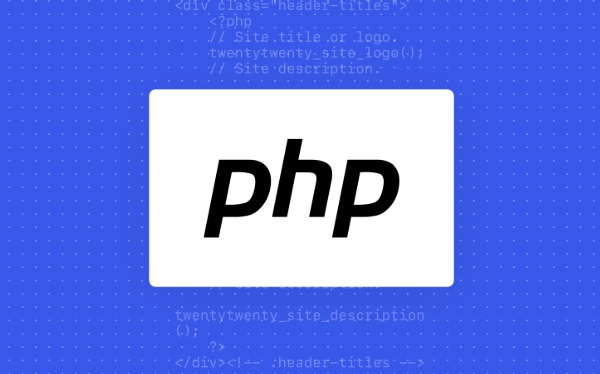XSS is a cross-site scripting attack that steals cookies or hijacks sessions by inserting malicious scripts; htmlspecialchars() can escape special characters into HTML entities to prevent browser execution. 1. XSS often occurs when user input is directly displayed, such as comments, search boxes, etc.; 2. htmlspecialchars() avoids execution by escaping characters such as , &; 3. Correct use includes: always escape the output content, specify the encoding as UTF-8, not escape data before storage, and select processing methods according to the context; 4. The easy to ignore points include: quotation marks are required to be closed in HTML attributes, rich text needs to be used to use whitelist filters, and JavaScript should use json_encode() to process variables.

XSS (cross-site scripting attack) is a common type of vulnerability in Web security, and htmlspecialchars() in PHP is one of the most commonly used and effective functions to prevent such attacks. Simply put, it can convert special characters into HTML entities to avoid the browser's mistakenly thinking it is executable code.

What is XSS? Why do you need htmlspecialchars?
XSS attacks usually occur when the user input is displayed directly on the page. For example, in comment areas, search boxes, user names, etc. If the content is not processed, the attacker can insert the <script></script> tag to execute malicious scripts, steal cookies, hijack sessions, etc.
At this time, the role of htmlspecialchars() comes: it will escape characters like , <code>> , & into a form that the browser will not execute, for example:

echo htmlspecialchars(&#39;<script>alert("xss")</script>&#39;); // Output: <script>alert("xss")</script>
This way the browser will not execute it as code.
How to use htmlspecialchars correctly?
There are several key points to note when using this function:

Always escape the output content
Regardless of whether the content is entered by the user or not, as long as it is finally displayed in the HTML page, it is best to pass this function once.Pay attention to encoding settings
It is recommended to specify the third parameter clearly as'UTF-8', otherwise there may be garbled or missession in some older versions of PHP.htmlspecialchars($input, ENT_QUOTES, &#39;UTF-8&#39;);
Do not escape storage data in advance
Escape should be done at the time of output, not before writing to the database. If you escape in advance, it may be troublesome to use the original data later.Different contexts are processed in different ways
htmlspecialchars()is mainly for the escape of HTML content. If you want to output variables in JavaScript or URL, you need to use other methods to deal with them, such asjson_encode()orurlencode().
What are the places that are easy to ignore?
Although htmlspecialchars() is practical, it is not omnipotent. Some places will still be bypassed if you are not careful:
Output in HTML attributes
If you put user input in HTML attributes (such asvalue="<?php echo $input; ?>"), usinghtmlspecialchars()is not enough. You also need to make sure that the attribute itself is closed and quotes are added.Rich text content
If you allow users to submit rich text content (such as formatted comments), you cannot usehtmlspecialchars()directly, otherwise all HTML will be escaped. At this time, it is necessary to cooperate with HTML whitelist filters, such asHTML Purifier.Injection in JavaScript
If you embed PHP variables in your JS code, for example:echo "var name = &#39;{$name}&#39;;";Even if
htmlspecialchars()is used, injection problems may occur due to string splicing. In this case, it is recommended to usejson_encode()to wrap variables:echo "var name = " . json_encode($name) . ";";
Let's summarize
PHP's
htmlspecialchars()function is one of the most basic and critical tools for defending against XSS. As long as you output the content input by the user to a web page, you should use it to escape. But there are several key points to remember:- Escaped at output, not at storage
- Set the correct encoding (usually UTF-8)
- Different security policies should be used in different output environments
- Rich text and JS environments require additional processing
Basically all this is not complicated but easy to ignore.
The above is the detailed content of PHP htmlspecialchars to prevent XSS. For more information, please follow other related articles on the PHP Chinese website!

Hot AI Tools

Undress AI Tool
Undress images for free

Undresser.AI Undress
AI-powered app for creating realistic nude photos

AI Clothes Remover
Online AI tool for removing clothes from photos.

Clothoff.io
AI clothes remover

Video Face Swap
Swap faces in any video effortlessly with our completely free AI face swap tool!

Hot Article

Hot Tools

Notepad++7.3.1
Easy-to-use and free code editor

SublimeText3 Chinese version
Chinese version, very easy to use

Zend Studio 13.0.1
Powerful PHP integrated development environment

Dreamweaver CS6
Visual web development tools

SublimeText3 Mac version
God-level code editing software (SublimeText3)
 How to use PHP to build social sharing functions PHP sharing interface integration practice
Jul 25, 2025 pm 08:51 PM
How to use PHP to build social sharing functions PHP sharing interface integration practice
Jul 25, 2025 pm 08:51 PM
The core method of building social sharing functions in PHP is to dynamically generate sharing links that meet the requirements of each platform. 1. First get the current page or specified URL and article information; 2. Use urlencode to encode the parameters; 3. Splice and generate sharing links according to the protocols of each platform; 4. Display links on the front end for users to click and share; 5. Dynamically generate OG tags on the page to optimize sharing content display; 6. Be sure to escape user input to prevent XSS attacks. This method does not require complex authentication, has low maintenance costs, and is suitable for most content sharing needs.
 PHP calls AI intelligent voice assistant PHP voice interaction system construction
Jul 25, 2025 pm 08:45 PM
PHP calls AI intelligent voice assistant PHP voice interaction system construction
Jul 25, 2025 pm 08:45 PM
User voice input is captured and sent to the PHP backend through the MediaRecorder API of the front-end JavaScript; 2. PHP saves the audio as a temporary file and calls STTAPI (such as Google or Baidu voice recognition) to convert it into text; 3. PHP sends the text to an AI service (such as OpenAIGPT) to obtain intelligent reply; 4. PHP then calls TTSAPI (such as Baidu or Google voice synthesis) to convert the reply to a voice file; 5. PHP streams the voice file back to the front-end to play, completing interaction. The entire process is dominated by PHP to ensure seamless connection between all links.
 How to use PHP combined with AI to achieve text error correction PHP syntax detection and optimization
Jul 25, 2025 pm 08:57 PM
How to use PHP combined with AI to achieve text error correction PHP syntax detection and optimization
Jul 25, 2025 pm 08:57 PM
To realize text error correction and syntax optimization with AI, you need to follow the following steps: 1. Select a suitable AI model or API, such as Baidu, Tencent API or open source NLP library; 2. Call the API through PHP's curl or Guzzle and process the return results; 3. Display error correction information in the application and allow users to choose whether to adopt it; 4. Use php-l and PHP_CodeSniffer for syntax detection and code optimization; 5. Continuously collect feedback and update the model or rules to improve the effect. When choosing AIAPI, focus on evaluating accuracy, response speed, price and support for PHP. Code optimization should follow PSR specifications, use cache reasonably, avoid circular queries, review code regularly, and use X
 PHP creates a blog comment system to monetize PHP comment review and anti-brush strategy
Jul 25, 2025 pm 08:27 PM
PHP creates a blog comment system to monetize PHP comment review and anti-brush strategy
Jul 25, 2025 pm 08:27 PM
1. Maximizing the commercial value of the comment system requires combining native advertising precise delivery, user paid value-added services (such as uploading pictures, top-up comments), influence incentive mechanism based on comment quality, and compliance anonymous data insight monetization; 2. The audit strategy should adopt a combination of pre-audit dynamic keyword filtering and user reporting mechanisms, supplemented by comment quality rating to achieve content hierarchical exposure; 3. Anti-brushing requires the construction of multi-layer defense: reCAPTCHAv3 sensorless verification, Honeypot honeypot field recognition robot, IP and timestamp frequency limit prevents watering, and content pattern recognition marks suspicious comments, and continuously iterate to deal with attacks.
 How to use PHP to combine AI to generate image. PHP automatically generates art works
Jul 25, 2025 pm 07:21 PM
How to use PHP to combine AI to generate image. PHP automatically generates art works
Jul 25, 2025 pm 07:21 PM
PHP does not directly perform AI image processing, but integrates through APIs, because it is good at web development rather than computing-intensive tasks. API integration can achieve professional division of labor, reduce costs, and improve efficiency; 2. Integrating key technologies include using Guzzle or cURL to send HTTP requests, JSON data encoding and decoding, API key security authentication, asynchronous queue processing time-consuming tasks, robust error handling and retry mechanism, image storage and display; 3. Common challenges include API cost out of control, uncontrollable generation results, poor user experience, security risks and difficult data management. The response strategies are setting user quotas and caches, providing propt guidance and multi-picture selection, asynchronous notifications and progress prompts, key environment variable storage and content audit, and cloud storage.
 PHP realizes commodity inventory management and monetization PHP inventory synchronization and alarm mechanism
Jul 25, 2025 pm 08:30 PM
PHP realizes commodity inventory management and monetization PHP inventory synchronization and alarm mechanism
Jul 25, 2025 pm 08:30 PM
PHP ensures inventory deduction atomicity through database transactions and FORUPDATE row locks to prevent high concurrent overselling; 2. Multi-platform inventory consistency depends on centralized management and event-driven synchronization, combining API/Webhook notifications and message queues to ensure reliable data transmission; 3. The alarm mechanism should set low inventory, zero/negative inventory, unsalable sales, replenishment cycles and abnormal fluctuations strategies in different scenarios, and select DingTalk, SMS or Email Responsible Persons according to the urgency, and the alarm information must be complete and clear to achieve business adaptation and rapid response.
 Beyond the LAMP Stack: PHP's Role in Modern Enterprise Architecture
Jul 27, 2025 am 04:31 AM
Beyond the LAMP Stack: PHP's Role in Modern Enterprise Architecture
Jul 27, 2025 am 04:31 AM
PHPisstillrelevantinmodernenterpriseenvironments.1.ModernPHP(7.xand8.x)offersperformancegains,stricttyping,JITcompilation,andmodernsyntax,makingitsuitableforlarge-scaleapplications.2.PHPintegrateseffectivelyinhybridarchitectures,servingasanAPIgateway
 PHP integrated AI speech recognition and translator PHP meeting record automatic generation solution
Jul 25, 2025 pm 07:06 PM
PHP integrated AI speech recognition and translator PHP meeting record automatic generation solution
Jul 25, 2025 pm 07:06 PM
Select the appropriate AI voice recognition service and integrate PHPSDK; 2. Use PHP to call ffmpeg to convert recordings into API-required formats (such as wav); 3. Upload files to cloud storage and call API asynchronous recognition; 4. Analyze JSON results and organize text using NLP technology; 5. Generate Word or Markdown documents to complete the automation of meeting records. The entire process needs to ensure data encryption, access control and compliance to ensure privacy and security.






